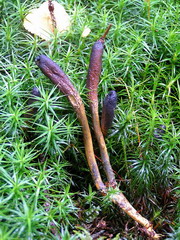Traditional Tibetan medicine, an important part of the Chinese medical tradition, has been evolving for nearly 3,000 years.
Popular Posts
-
Many familiar diseases of the kidneys 5, immune regulation 6, the digestive logic, lessen heartburn and promote menstrual flood in female...
-
Tibetan medical theory of the system, complete, and many medical books. One of the most famous buildings in the 8th century AD off the cloud...
-
Burial, the deceased's body is to feed the eagle. After eating eagle into the sky, heaven Tibetans think that the deceased well. Funeral...
Tuesday, December 28, 2010
What is Cordyceps?
Cordyceps is a type of ascomycete fungi that includes about 400 described species. All Cordyceps species are sponging, generally on insects and other arthropods (they are thus entomopathogenic fungi); a few are parasitic on other fungi. The best known species of the group is Cordyceps sinensis which gives knoll to the vegetable caterpillar, a precious ingredient in Chinese traditional medicines.
If a Cordyceps toadstool attacks a mass, the mycelium invades and eventually replaces the hoard bandanna, while the elongated fruiting body (stroma) may be cylindrical, cleft, or of thorny smooth. The stroma bears many small, thermos-shaped perithecia that inhibit the asci. These in rotate suppress the thread-like ascospores, which usually unravel into fragments and are presumably infective.
Some Cordyceps species are able to imitate the conduct of their insect host; Cordyceps unilateralis for demand causes ants to climb the works and clip there before they die, assuring maximal distribution of the spores from the fruiting body that sprouts out of the down insect's body.
The species has a worldwide distribution and most of the about 400 species have been described from Asia (notably China, Japan, Korea and Thailand). Cordyceps species are particularly abundant and diverse in damp peaceable and humid forests.
The group has many anamorphs (neuter states), of which Beauveria (maybe counting Beauveria bassiana, Metarhizium, and Isaria) are the better known, since these have been used in biological command of insect rats.
Some Cordyceps species are sources of biochemicals with interesting biological and pharmacological properties, like cordycepin; the anamorph of Cordyceps subsessilis (Tolypocladium inflatum) was the font of ciclosporin — a drug effective in soul organ transplants, as it suppresses the immune logic (Immunosuppressive drug).
Labels:
Cordyceps
Subscribe to:
Post Comments (Atom)


Sorry too many mistakes, this contribution does not help, but confuse.
ReplyDeleteFirst the image is Elaphocordyceps ophioglossoides, no Ophiocordycps sinensis (O.s.). It is not even parasitizing an insect, but a truffle.
O.s. is only distributed on the tibetan plateau and Himalayas, not globally.
"knoll to the vegetable caterpillar"? sounds Chinglish and Vegetable caterpillar is dated, Catrerpillar fungus, and no Caterpillar fungus are no toadstools.
"damp peaceable and humid forests" not at all, O.s. like open slopes, maybe 0.5 grow in open forest. Anyway, please correct or delete.
Daniel Winkler. www.danielwinkler.com with lots of Cordyceps info